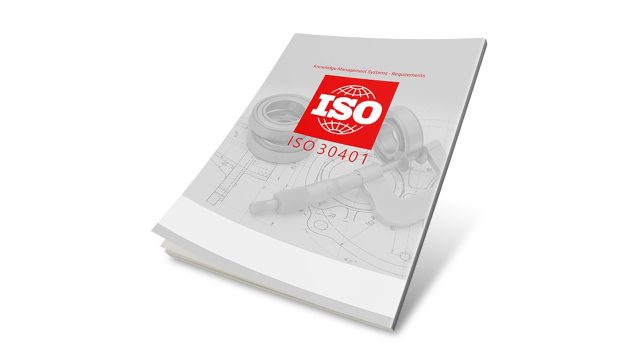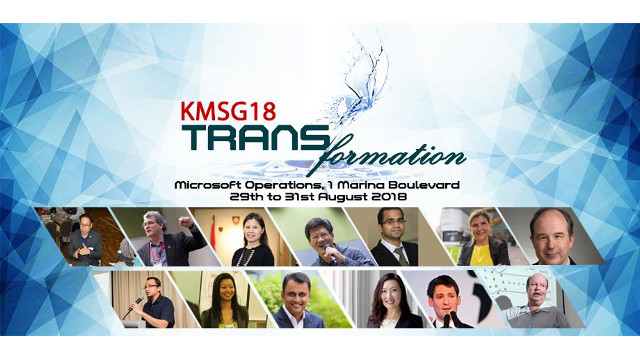
Technical knowledge management systems [Personality & TKMS series]
This is part 5 of a series of articles featuring edited portions of Dr. Maureen Sullivan’s PhD dissertation.
Knowledge management systems (KMSs), which are used as a part of the knowledge management initiative to share data and information, are explored by Gallupe1 and Damodaran & Olphert2. Many companies have developed and implemented KMSs to effectively share information amongst internal and external customers. Gallupe advises that “Knowledge management systems share many similarities with information systems, and many tools and techniques of knowledge management are related to information systems”.
Moreover, KMSs, as with information systems (ISs), help in facilitating organizational learning by collecting important knowledge and making it available to employees as needed. Additionally, KMSs are seen as a way to help organizations create, share, and use knowledge. Technically, KMSs are no different from traditional information systems (ISs), but they can extend past traditional ISs by providing context for the information presented in an information system. Additionally, the key parts of KMSs are the knowledge and the knowledge workers.
The key critical component in ensuring success of KMSs is that organizations must foster a culture that encourages knowledge sharing among its employees. Consequently, the measurement of KMS success will have to involve not only the features of information technology (IT)-enabled ISs but also the social aspects of people and culture within organizations. The DeLone and McLean3 information system (IS) success model, a model used to measure information system success, can be used as the foundation to develop a KMS success model.
Gallupe‘s4 study included a literature review of major research into the uses of KMSs that indicated the lack of range of research in this area. Consequently, Gallupe suggested that “if KMSs are to continue to have a positive impact on organizations, more study will be needed to assess the effects of these systems on the organization as a whole”. Researchers must determine and understand how KMSs affect people and organizational strategy. In addition, Gallupe asserted that researchers must review the best practices in determination of the benefits of KMSs. In the past 10 years, many KM projects have come and gone. “Many of these projects were successful and organizations are still leveraging benefits from their KM systems” 5.
Technical knowledge management systems
A technical knowledge management system (TKMS) can be defined as a knowledge management system created by hardware and software vendors containing technical knowledge on how to perform certain technical operations and resolve technical software or hardware problems. The research on measurement of TKMSs is important in the understanding of the benefits of using and accepting these systems. The research on acceptance is vital to understanding the elements to accepting technology, like TKMSs.
Research on measurement
Various researchers have approached the issue of linking business performance with KM and IT6. The approach has included classifying the issue into five categories:
- Quantitative measures studies.
- Accounts and/or audit types of studies.
- Studies of the causal relations between KM and business performance with or without the involvement of IT.
- Studies based on the balanced scorecard.
- Studies that evaluate and measure the impact.
Using quantitative measures to determine TKMS‘s return on investment (ROI) is probably the most used method of measurement in organizations 7. The main goal of organizations that distribute TKMSs is ROI. “Using proven measurement methodology8, the model estimates the annualized cost of knowledge management and the financial benefits produced in five areas: personal productivity, the productivity of others, speed of problem resolution, cost savings, and quality”. Based on the resulting ROI (50%), Anderson provided recommendations to assist in increasing the business benefits of KM. ROI has been one method to measure the benefit of KMSs and could be one way to measure the benefit of TKMSs.
To measure KMS success, more specifically, TKMSs, the DeLone and McLean9 model has been used in many studies and has served as a framework for conceptualizing and operationalizing IS success. In the DeLone and McLean “IS success model, systems quality measures technical success; information quality measures semantic success; and use, user satisfaction, individual impacts, and organizational impacts measure effectiveness success”.
In 2006, Wu and Wang10 conducted a study that re-specified the DeLone and McLean model to measure KMS success and its validation in empirical surveys about KMS. Wu and Wang conducted a quantitative study that use a questionnaire survey administered to fifty top Taiwanese companies using KMSs. A contact person was established at each company and that person distributed the self-administered questionnaires to KMS users. The data was analyzed using composite scores to measure the reliability and validity. Wu and Wang‘s study “indicated that user perceived KMS benefits played a significant role in KMS success, but it is necessary to understand the relationship between user perceptions of KMS benefits in order to generalize our findings”.
This researcher‘s study expands Wu and Wang‘s suggestions to study the relationship between user perceptions and TKMSs. The outcome of this study was a validated KMS success model that introduced new KMS measures: knowledge/information quality as a KMS success measure and system use in the KMS context11. Although, many studies have been conducted that measure ROI and KMS success, there is a shortage of literature on the measurement of TKMSs.
Research on acceptance
Recently, KM issues have included the development of a research agenda12 and the use of IT to improve organizational knowledge13. However, the IT implementation in support KM initiatives has been missing in this research. To date, the factors affecting individual acceptance and use of IT in the form of KMSs, more specifically, TKMSs have produced little research.
To combat the lack of research in this area, researchers Money and Turner14 conducted a study to assess the relationships among the technology acceptance model‘s (TAM‘s) “two primary belief constructs: (a) perceived usefulness and perceived ease of use, and (b) users‘ intention to use, and their usage of the target” KMS. The results of this study indicated that previous acceptance research in IT, more specifically TAM, could serve as the groundwork for KMS user acceptance research. Moreover, relationships between the two primary belief constructs in Money‘s and Turner‘s study are mostly consistent with constructs found in previous TAM research.
Next edition: Predictive behavior models in the research of technology acceptance.
- Gallupe, B. (2001). Knowledge management systems: Surveying the landscape. International Journal of Management Review, 3(1), 61-77. ↩
- Damodaran, L., & Olphert, W. (2000). Barriers and facilitators to the use of knowledge management systems. Behaviour & Information Technology, 19(6), 405-413. doi:10.1080/014492900750052660 ↩
- DeLone, W. H., & McLean, E. R. (2003). The DeLone and McLean model of information system success: A ten-year update. Journal of Management Information Systems, 19(4), 9-30. ↩
- Gallupe, B. (2001). Knowledge management systems: Surveying the landscape. International Journal of Management Review, 3(1), 61-77. ↩
- Tsui, E. (2005). The role of IT in KM: Where are we now and where are we heading? Journal of Knowledge Management, 9(1), 3-6. doi:10.1108/13673270510584198 ↩
- Papoutsakis, H., & Vallès, R. S. (2006). Linking knowledge management and information technology to business performance: A literature review and a proposed model. Journal of Knowledge Management Practice, 7(1). Retrieved from http://www.tlainc.com/articl106.htm ↩
- Papoutsakis, H., & Vallès, R. S. (2006). Linking knowledge management and information technology to business performance: A literature review and a proposed model. Journal of Knowledge Management Practice, 7(1). Retrieved from http://www.tlainc.com/articl106.htm ↩
- Phillips, J. J. (1997). Return on investment in training and development programs. Houston, TX: Gulf Publishing. ↩
- DeLone, W. H., & McLean, E. R. (2003). The DeLone and McLean model of information system success: A ten-year update. Journal of Management Information Systems, 19(4), 9-30. ↩
- Wu, J. H., & Wang, Y. M. (2006). Measuring KMS success: A respecification of the DeLone and McLean‘s model. Information and Management, 43(6), 728-739. doi:10.1016/j.im.2006.05.002 ↩
- Wu, J. H., & Wang, Y. M. (2006). Measuring KMS success: A respecification of the DeLone and McLean‘s model. Information and Management, 43(6), 728-739. doi:10.1016/j.im.2006.05.002 ↩
- Davenport, T., & Grover, V. (2001). General perspectives on knowledge management: Fostering a research agenda. Journal of Management Information Systems, 18(1), 5-21. ↩
- Bourdreau, A., & Couillard, G. (1999). Systems integration and knowledge management. Information Systems Management, 16(4), 24-33. doi:10.1201/1078/43189.16.4.19990901/31200.4 ↩
- Money, W., & Turner, A. (2004, January 5-8). Application of the technology acceptance model to a knowledge management system. Proceedings of the 37Th Hawaii International Conference on System Sciences (HICSS037), Hawaii. 1-9. ↩






